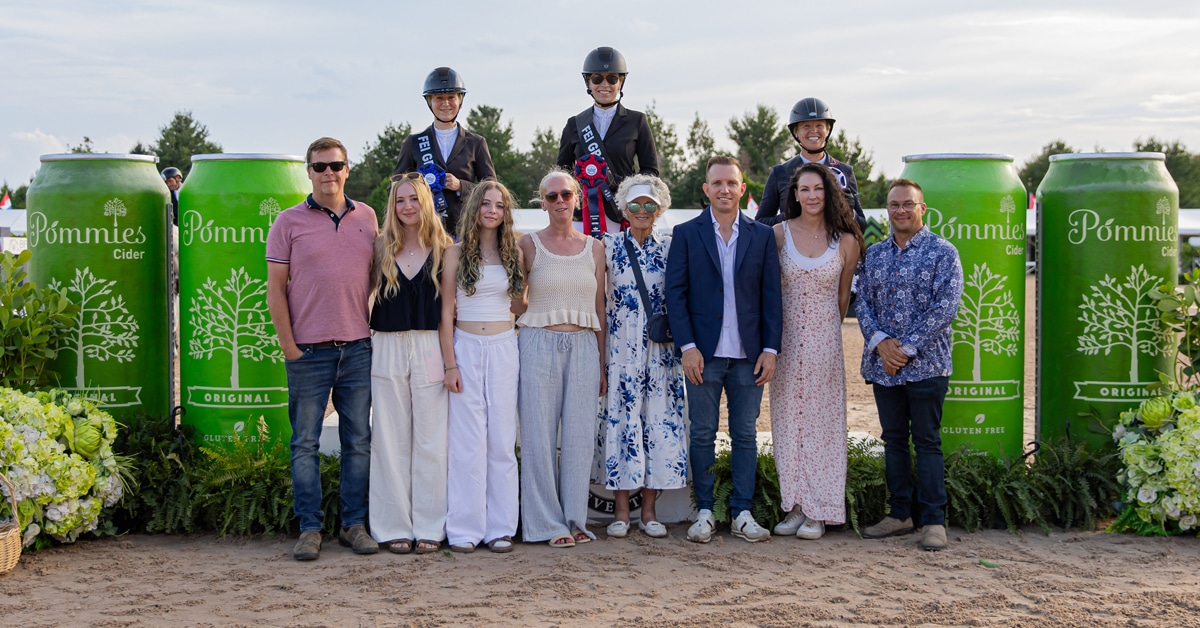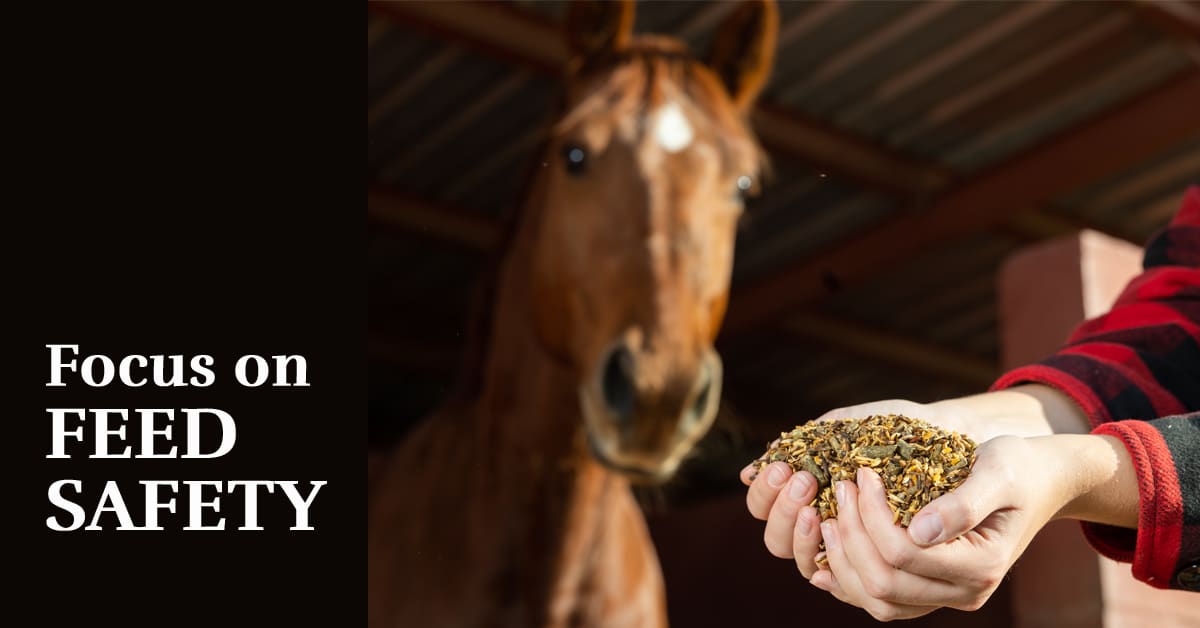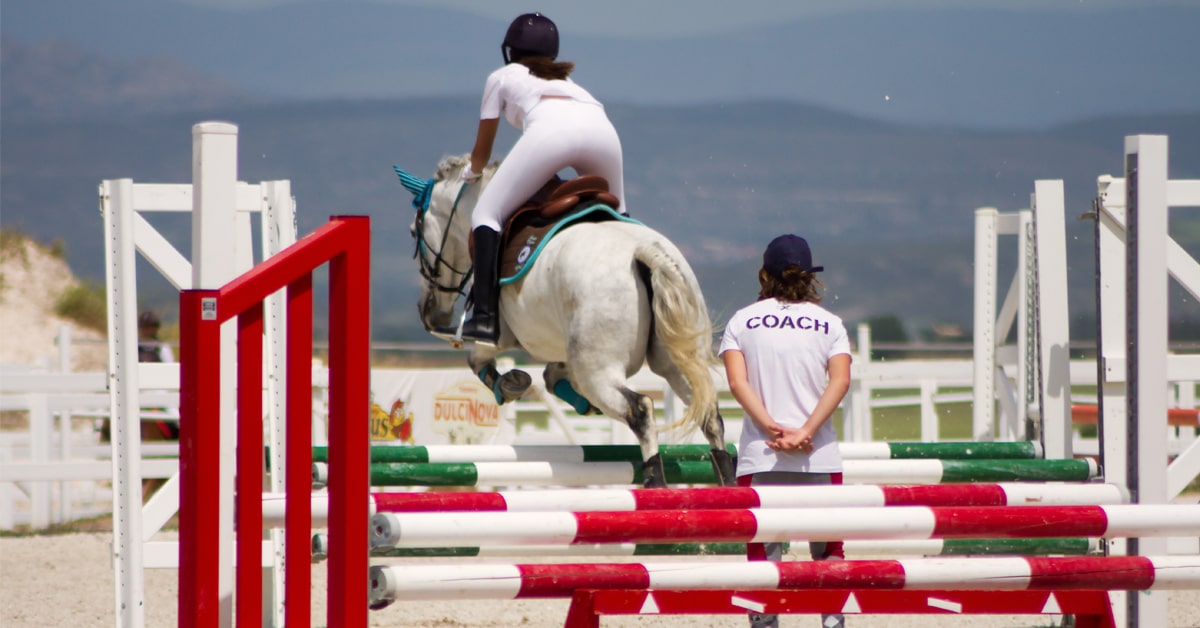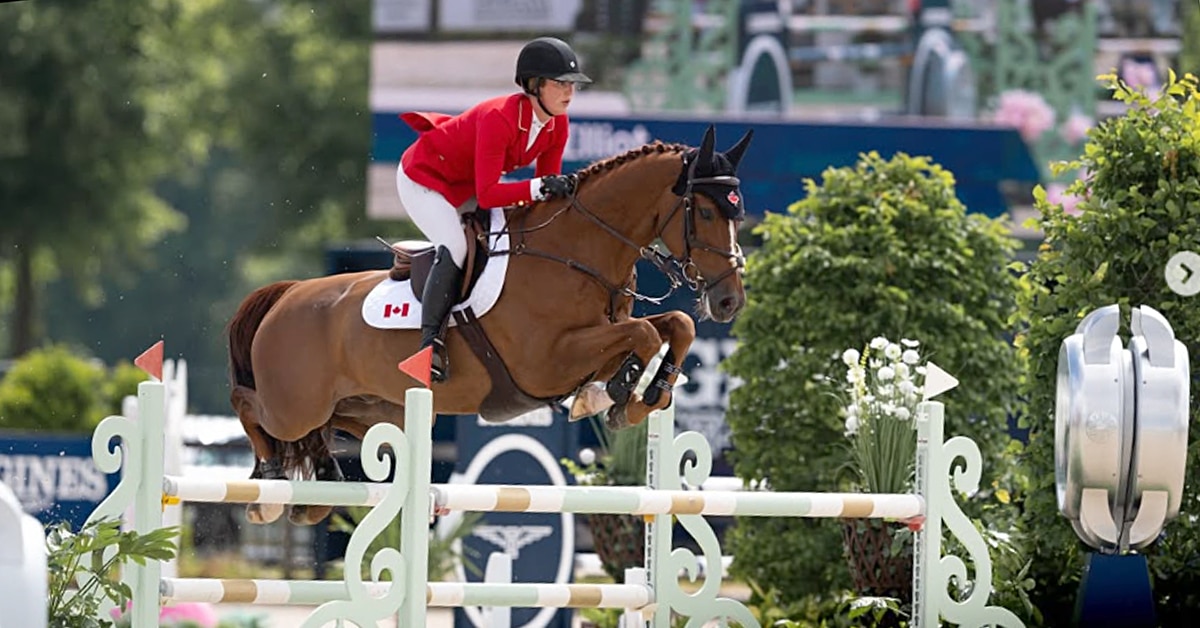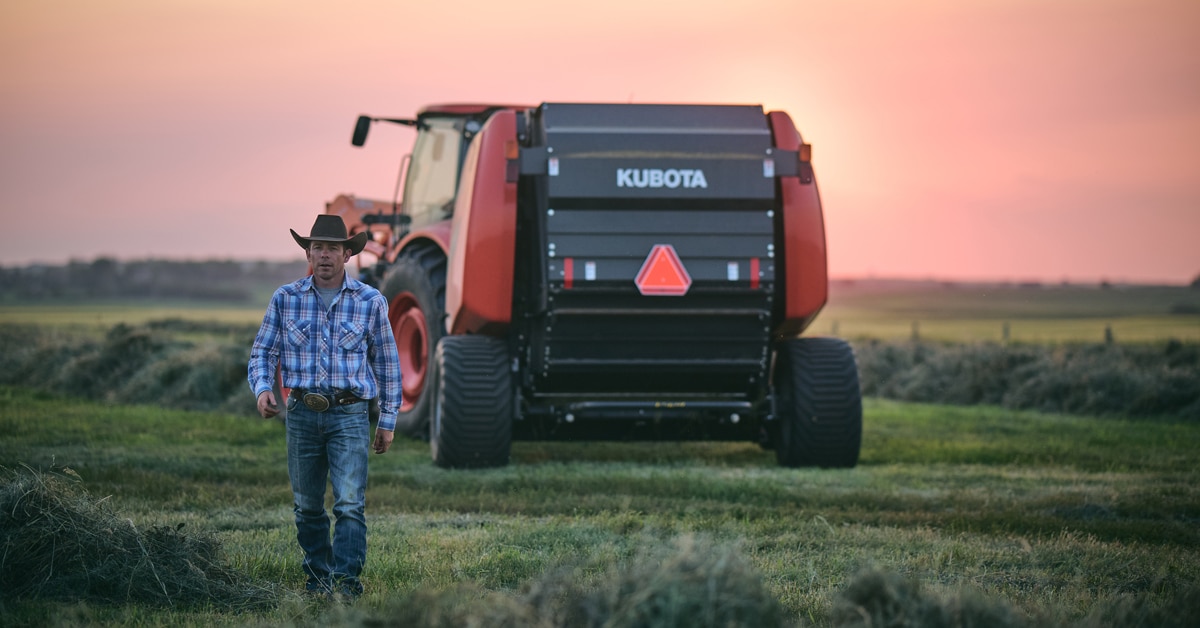In the April 2009 issue of Horse Sport we took a look at a mere sampling of research that is being carried out at the vet schools. Today, we catch up on a number of those projects to see where they currently stand.
University of Guelph, Ontario Veterinary College
The OVC, which celebrates its 150th year in 2012, is undergoing a multi-year expansion. Part of this growth includes the eventual construction of a new Equine Sports Medicine and Reproduction Centre. In 2010, the E.P. Taylor Equine Research Fund announced a funding boost of $2 million toward research into the health and performance of racehorses.
EARLY PREGNANCY LOSS
The research: Dr. Keith Betteridge and collaborators continue long-term research into why many mares will become pregnant, but abort within a short time. In the third week the embryo, enclosed in a conceptus (capsule), attaches to the endometrium (uterine lining) where the placenta will develop. The embryo exchanges chemical signals with the mare, but if the signals aren’t in synch, the pregnancy is lost. “As in life,” said Dr. Betteridge previously, “communication is critical!”
Update: Researchers collected conceptuses and small pieces of the endometrium from normal and “failing” pregnancies to investigate how changes in proteins, hormones and other molecules determine a pregnancy’s success. According to Betteridge’s research, approximately 16 per cent subsequently fail and about 60 per cent of those failures occur within the first five weeks of pregnancy. “The work will help explain conceptus interaction with the endometrium that is essential to pregnancy maintenance and which, when disrupted, results in pregnancy failure,” says Betteridge. It is anticipated that diagnostic tests to determine whether a mare is likely to have a full-term pregnancy, and new infertility treatments, will be developed.
PAIN RELIEF INJECTIONS
The research: A team of investigators including anesthesiologist Dr. Alexander Valverde, surgeon Dr. Nicola Cribb, and internist Dr. Luis Arroyo are investigating injecting morphine into the blood supply of bones in horses’ legs to provide pain relief for up to 24 hours. Horses suffering from painful orthopedic (bone and joint) injuries have previously been administered nerve blocks, analgesics and epidural injections. These treatments can have detrimental systemic side effects or cause issues such as numbness leading to further injury.
Update: While there are no specific findings to report yet, all sample collection has been concluded. “This month [June] we are processing the samples we collected over the last two years, so that within one month we can send them all to the lab for their analysis,” says Valverde.
University of Prince Edward Island, Atlantic Veterinary College
Overall, UPEI’s research income rose from $3 million a decade ago to $16 million in 2009 – a 430 per cent increase – making it the number-one school for funding growth during that period. The AVC, currently celebrating its 25th anniversary year, is undergoing a $45 million capital expansion.
STEM CELL WORK EXPANDS
The research: Dr. Laurie McDuffee, associate professor in large animal surgery at the Atlantic Veterinary College, continues research into cell-based tissue therapy. Stem cells are extracted from an injured horse’s healthy tissue, multiplied in the laboratory and re-injected into injured tendons and ligaments and bones to aid healing and reduce the chance of re-injury. (For more information on stem cell technology, see “Regenerative Therapy” in the July issue.)
Update: After AVC and UK-based VetCell Bioscience Ltd. established a partnership in 2008, the university became a Canadian centre for VetCell’s equine stem cell therapy technology. In 2009, the Atlantic Canada Opportunities Agency’s Atlantic Innovation Fund – which encourages commercialization of research in the region – awarded $2.1 million in funding for the project over a four-year period. “With this research funding, the lab team has been able to go further with the equine bone healing research and move into companion animal stem cell research,” says Dr. McDuffee. Although the work currently focuses on healing high-performance horses, it may also lead to human applications.
AIRWAY DISORDER PROJECT
The research: AVC’s acquisition of a portable pulmonary function testing (PFT) system has allowed Dr. Maureen Wichtel to study inflammatory airway disease (IAD) in horses. IAD is a non-infectious disorder of the lower airway caused by the inhalation of dust and mould particles. Horses with IAD do not generally appear ill; outward signs may only appear as reduced performance and cough. If untreated, IAD can affect quality of life and may lead to heaves.
Update: Through her work, Wichtel has learned IAD is common in both racehorses and sport horses, but, “the primary complaints by the owners differ. Racehorses are performing poorly; most other horses have a chronic cough, or difficulty collecting (behavioural complaints). Nasal discharges are less common, but may occur. Also, the type of inflammation in the lower airways differs between the poor performing racehorses and the coughing horses, for reasons that we don’t understand. Horses with a chronic cough seem to have a larger degree of inflammation than exercise-intolerant racehorses.”
The aim of this ongoing study is to provide early diagnosis so horses can be treated promptly. This will decrease the likelihood of permanent damage to the lower airways, and in susceptible horses, prevent the progression of the disease to heaves. It is also intended that this research will increase awareness of IAD and offer Maritime clinics the opportunity to benefit from the portable and non-invasive technology the PFT offers.
Faculty of Veterinary Medicine, Université de Montréal
The Faculty of Veterinary Medicine in Saint-Hyacinthe celebrates its 125th year in 2011. Of the many equine-related research projects that are ongoing, the equine research group, established in 1982, focuses on clinically-oriented research mainly in the areas of the respiratory and musculoskeletal systems.
HEAVES AND SMOOTH MUSCLE DEVELOPMENT
The research: A multi-disciplinary team led by professor in Equine Internal Medicine, Dr. Jean-Pierre Lavoie, has been researching whether structural changes in the airways of horses with heaves are reversible by removing environmental allergens or using anti-inflammatory drugs.
Update: Since 2009, Lavoie and his colleagues examined horses’ lung tissue samples before and during bouts of heaves and after a course of drug treatment with a synthetic corticosteroid. “We have confirmed that horses with heaves have approximately twice as much smooth muscle surrounding their smallest airways,” says Lavoie, adding that they also found an increase of collagen (found in scar tissue) in the airways of these horses. Furthermore, preliminary results indicate that treatment for 11 months with inhaled corticosteroids or improvement in the environment, while controlling the clinical signs at rest, only partially decrease the airway smooth muscle. “We believe that these results are very important, as they indicate the need to develop early markers of the disease that would allow us intervening before susceptible horses develop the lung lesions observed in heaves,” says Lavoie.
Human asthma sufferers and horses with heaves share similar disease characteristics. “We hope that our findings will contribute to improve both human and equine health,” says Lavoie.
THE ROLE OF OXYGEN IN PROUD FLESH
The research: Granulation tissue is a normal component of wound healing. Composed of new blood vessels and cells migrating from the surrounding skin, it serves as a scaffold for new skin to grow over. Dr. Christine Theoret, professor and equine surgeon, has been researching why in some limb wounds, the granulation tissue becomes exuberant and produces proud flesh. Her work is relevant to human medicine, too, as proud flesh is similar to overscarring in humans (keloids).
Update: Theoret has been investigating ways to artificially manipulate the levels of certain genes and proteins in leg wounds so that they can heal similar to body wounds, which generally heal without problem. It has been theorized that tissue hypoxia (lack of oxygen) is a contributing factor in the development of proud flesh. Theoret’s soon-to-be-published study provides evidence of hypoxia in limb wounds during the early period of the repair process and a more prolonged oxygen demand during the late period of healing. Further studies should prove greater hypoxia in wounds developing proud flesh. This will provide a basis to develop appropriate treatments. Theoret is also looking into the use of anti-cancer drugs to help slow blood vessel growth – an important component of proud flesh.
Faculty of Veterinary Medicine, University of Calgary
In 2009, research programming was just in the building stages at the then brand-new University of Calgary’s Faculty of Veterinary Medicine. Annual research funding for the school in total was $8 million in 2010.
A VIEW INSIDE
The research: Already underway when the faculty welcomed its first students in 2009, the UCVM’s Equine Respiratory Laboratory, under Dr. Renaud Leguillette, was looking into equine recurrent airway obstruction. This entailed clinical trials for medications and lung mechanics in horses with the condition, as well as an epidemiologic study on horse health and heaves in Alberta.
Update: Leguillette, an equine internal medicine specialist with interests in chronic respiratory disease in horses and biology of airway smooth muscle in horses and humans, was able to secure a special tool in the research and diagnosis of respiratory disease. UCVM is the first veterinary faculty in Canada to own a dynamic respiratory scope (DRS) – a portable, wireless endoscope that allows clinicians and researchers to see inside a horse’s upper airway while the horse is exercising.
Traditional endoscopy is limiting. Often a condition such as respiratory noise or decrease in performance doesn’t appear until the horse is exercised. Previously, a high-speed treadmill was required to observe the upper airways during exercise, which sometimes required horses to become accustomed the machine, potentially risking the safety of the animal and personnel.
The DRS enables the horses to be worked in their normal workout environment. The rider wears a backpack or it is attached to a sulky or cart and then attached to the horse. The backpack transmits video images of the horse’s airway, which can be recorded and played back, allowing for diagnosis of upper airway problems.
Among Leguillette’s other studies are investigations into inhaled medications in the treatment of equine inflammatory airway disease.
University of Saskatchewan, Western College of Veterinary Medicine
In the mid-1970s, the WCVM’s Equine Health Research Fund (EHRF) and its research fellowship program were established. In February 2011, construction began on an expansion to the horse health centre that will add 11,000 square feet and resources for teaching, clinical work and research. The expansion will be called the Ryan/Dube Equine Performance Centre, honouring the couple that donated $1.2 million toward its construction. The province, Spruce Meadows’ Marg and Ron Southern, and the WCVM provided the remaining funding for the $2.8 million project.
ULCERS IN PERFORMANCE HORSES
The research: Dr. Fernando J. Marqués, a specialist in large animal internal medicine at WCVM, recently completed a study that looked into the prevalence of equine gastric ulcer syndrome (EGUS), more specifically nonglandular squamous disease, particularly among performance horses.
Update: Previous studies from around the world had already confirmed that thoroughbred racehorses are most affected by nonglandular squamous disease, but Marqués and his research team wanted to find out if Saskatchewan horses, who only race three months of the year and are pastured in the months leading up to racing, would be similarly affected. It turns out they are.
Using a three-metre gastroscope, portable digital recording and imaging system, Marqués and his research team examined thoroughbred racehorses at Saskatoon’s Marquis Downs during the 2008 and 2009 racing seasons. The team discovered 74.5 per cent of the 94 racehorses involved in the study had stomach ulcers.
A follow-up study will use these results to establish if there’s a relationship between cortisol (the so-called “stress hormone”) concentration in the hair and ulcers. A link between cortisol and stress levels has been indicated in previous studies of wild animals. “If we consider that cortisol increases with stress due to pain, then horses with severe gastric ulceration, and presumably under pain, may have higher cortisol levels than horses with no gastric lesions,” explains Dr. Marqués. This could lead to screening tests that would help owners and veterinarians make treatment and management decisions to prevent and/or mitigate the effects of stress and ulcers.
The Latest
